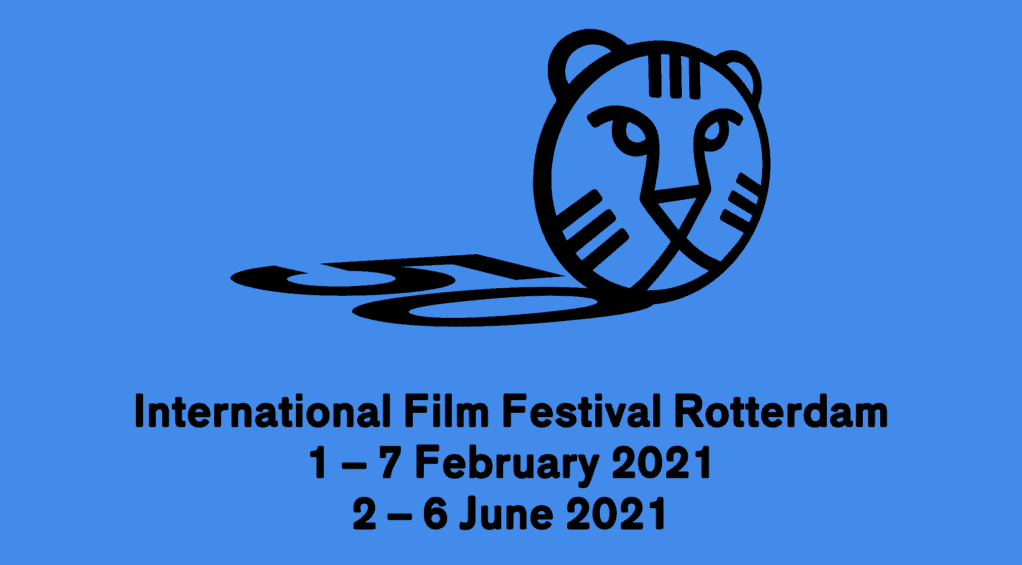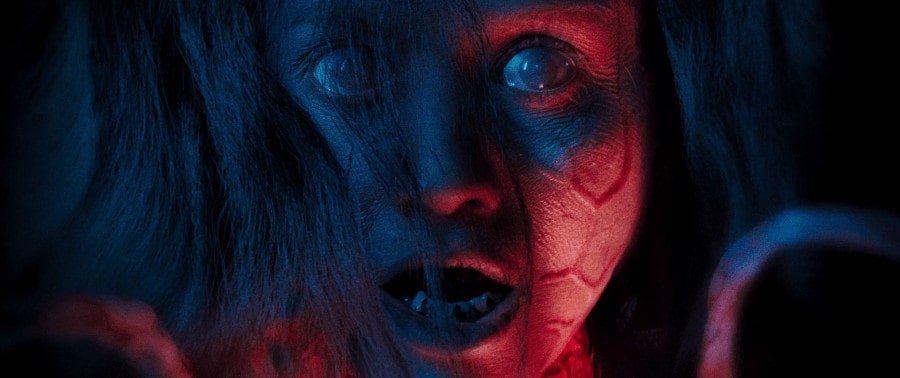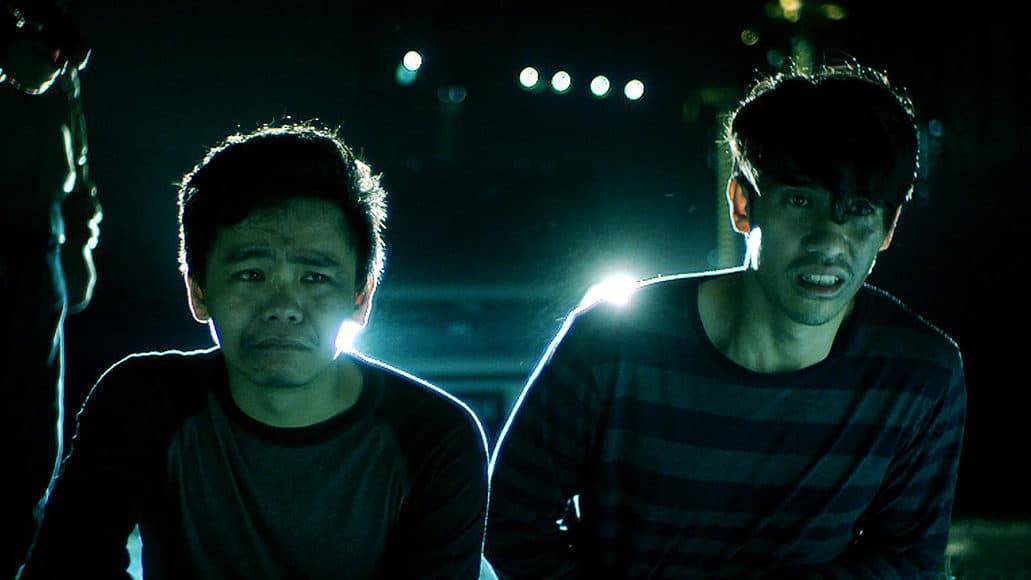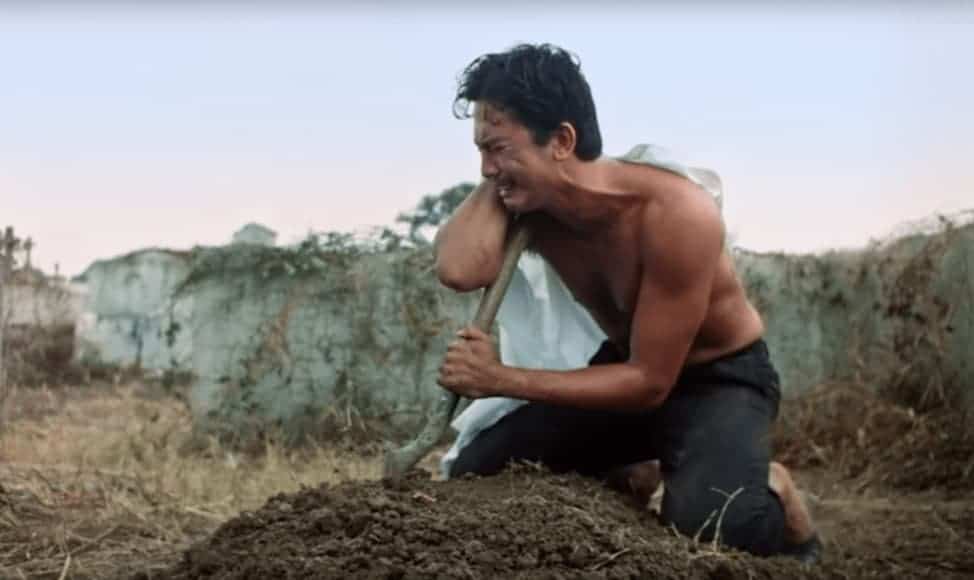Video artist and film researcher Pallavi Paul (1987, India) works with video, installations and performance. She started her scientific career with a study of literary science, and has now completed her PhD in Film Studies in New Delhi. Paul has always been interested in the power of language and its possible abuse, which is evident in her works. Deeply fascinated by the technologies of poetry and time travel, she tries to create a laboratory in which the borders between fantasy, resistance, politics and history are tested. With the mid-length “The Blind Rabbit” (2020), Paul explores the intersection of power, gender and narrativisation of memory. Paul's work has been shown at, among others, Tate Gallery in London, Contour Biennale in Mechelen and Mumbai Film Festival.
On the occasion of “The Blind Rabbit” screening at International Film Festival Rotterdam, we speak with her about dealing with political, social and historical issues through an experimental approach, police brutality and the context it is created and implemented within, individual accountability, systemic violence, and many other topics.

The film is historical and political, among other elements, but your approach is experimental, more artistic if you prefer, instead of the regular, documentary practices. Why did you choose this approach?
I take aesthetics very seriously, as a historical, political, but also as a counter-historical force. In all of my work, from 2013 and onwards, it is very important for me to interrupt any conventional logic of representation, of reducing people to geography, of reducing people to history, or trapping them in what I like to call the “biographical mold”. Because I think that, when we try to trap people or phenomena or ideas into the very sterile perimeter of the biography, we lose out often on varied possibilities. For example, on phenomena that do not make sense within the logic of history, but are so significant that they can alter the fate of entire people, of entire societies. I feel that this conventional documentary mode that frequently has a sterile understanding of time is unable to apprehend that, unable to deal with the richness of life. Therefore, for me, the aesthetic is an integral part of that endeavor, to continue to produce new vantage points, from where to look and whom to look at.
Can you give us some details about the introductory scene of the film? I found it rather impressive.
It was shot with a DJI Osmo camera and is a kind of gimbal based floating sort of form, and I wanted to evoke this sort of mythical, slightly menacing but also seductive idea of this phantom tiger that is moving around. It was very important that the landscape did not have people in it, a landscape that seems unending and continuous, a landscape that looks beautiful, but also equally harsh, attractive but also inhospitable. So for me, it was very important to create this seductive, fluid movement in a space that it is beautiful but also terrifying.
Is the tiger a metaphor for police brutality?
I would actually like the audience of the film to tell me what it strikes them as. But I did not meant the tiger only as a metaphor, but also as this image that resists completion. I actually like to think of it as an allegory rather than a metaphor; for the filmic form for example or the despotic power that rules us today as different parts of the world see different iterations of this tiger. For example, there is this massive need for populist leaders, there is this seduction that they produce and yet, they devour those who choose them. Whether we look at Brazil or India, or recently the USA, (although things have changed there recently) all these places that similar things are happening. There is this seduction for things that can potentially eat you up. It can be an allegory for many things, for brutality ,for power but also for a certain imagination of art, of a certain imagination of aesthetics.

The violent events depicted on screen involve the National Emergency of 75-77, the anti-Sikh pogrom of 1984 and the recent attacks on students in a library. Why do you think history repeats itself like that?
It is an excellent question, because I feel that more of a repetition, what is happening is that we have never dismantled the conditions that produce brutality. These violent events are not isolated events for which one particular leader can be held responsible. For the events of the 75-77 and 1984, it was the Congress government, today we have a monstrous BGP government. It is not that the particular nature of the party or the person in power is responsible for these things, but it is in fact the structure that produces people as terrorized subjects, it is the structure that allows a certain kind of reign of terror to unleash on people. That structure is challenged, but has never been fundamentally dismantled. This is the reason we see a constant expansion of brutality. However, I also want to say here that it is also a magnificent imagination of a push back against these brutalities, new forms of protest have come up, new forms of resistance have also emerged. I do not see it as a one way street where everything is getting swished; yes, that is very much the effort but there is also pushback, very strong hitting back through imagination, courage and moral fortitude that very much scares this government today
During the National Emergency, police would arrest children from the streets. What was their justification?
There is no justification, they were kidnappings. Basically, they had to fill arrest quotas. The real reason for the Emergency was that Indira Ghandi was scared of being dethroned, having the position of the Prime Minister taken away from her. The official reason that was given, though, was that India is under threat because of the multiplication of anti-social elements and of people who attack national integrity. Now, if you announce that, you also have to produce that threat, to project that threat. Since the threat did not existed, they had to invent it. How do you invent it? Basically you started to kidnap, because they were no criminals, the police just started kidnapping people just walking on the road, and presenting them as arrests. That came to create numbers, the people kidnapped became statistics. Furthermore, because this whole history was so inconvenient, all records have been destroyed, as one of the gentlemen in the film states. Fake reports were forced-made and then they were destroyed, essentially they created a lie and then they destroyed it.
Was there no reaction though? As mentioned in the film, some of those kids arrested had parents, they lived somewhere. Did their parents asked for some kind of accountability?
That is why history is so disturbing, they did not leave any trail. If there were no records, how could someone take them to court or said anything for that matter? These people were erased from the system. The memories of these now old policemen is the only surviving archive of this violence, of this terrible brutality. The two people presented in the film, one man and one woman, are still troubled by that history. The gentleman is nonchalant about it, he thinks of it as a great act of creativity.

How did you find the people you interviewed for the film? And how did you find the video and sound footage featuring in the film?
I did over 50 interviews, I spoke to ex-police officials. Like an investigation, I followed small pieces of information and tried to assemble everything together. The footage is a mixture of what I shot myself and materials circulating on social media
Police brutality seems to happen all over the world. Why do you think that people from different countries and abackgrounds who become policemen are so prone to violence?
The idea of the state repressing people is very much internalized in this mode of policing, the whole idea of the enforcement of a dictate as opposed to producing a discourse around it, is the root of any brutality. And the police becomes a very straightforward way for government and states to enforce. Therefore, the fact that there is complete subordination to the state dictate by the police and on the other hand, a monstrous amplification of their drive when it comes to their interaction with the public, produces a very ugly chain of brutality
Do you think, though, that there is also some responsibility to the policeman as an individual?
Responsibility is a strange word. I think there should be accountability, and one of the reasons I wanted to make this film is because I realized that in the so-called all kinds of progressive, leftist culture of arts and film etc, there is very little work that deals with the inner life of police power. We look at them as this antagonistic surface, a horrible brutal monolith. But until we inhabit the inner life of this monstrous form, we will never know what goes on. So your question is interesting. Is the individual in the police force implicated in some way? The answer to that, I would say is yes. It ought to be. However, we also have to create an intellectual climate in which to interpret what that responsibility means. Obviously, the state will not create that, but we have not created that also. Therefore, we as people, who are potentially subjects of their brutality need to create an intellectual climate within which that responsibility can be translated, can be interpreted and debated. The film is also a way of trying to do that.
How do you think we can change this whole structure?
I think one philosophical and also practical and also everyday win is that capitalism has taught us to think of freedom as fixed entity which can be given away, the Government is supposed to grant people freedom, freedom of speech, expression etc. But what is happened today because of the logic of capitalism, freedom for its own sake has become this completely abstract idea, and therefore, can be very easily corrupted and vulgarized. If we insist and reestablish a relationship between freedom and justice, where we are able to say that freedom for its own sake means nothing, democracy for its own sake, within a certain logic of capitalistic expansion means nothing, because so many people are left out of it: if you can buy, you are free, that is what capitalism does today. If we are able to move the dialogue and the discourse towards questions of justice, we have a chance of dismantling these structures.
What is your opinion of the Indian experimental movie “industry” at the moment? Are there opportunities for directors who shoot these kind of films?
I still think the grip of traditional documentary and fictional forms over popular imagination is quite strong- but equally with democratisation of technology and new and interesting filmmakers coming into the fray – things will get better and more exciting.
Are you working on anything new at the moment?
I am still thinking of several ideas, for now, I am just enjoying having completed this film!















